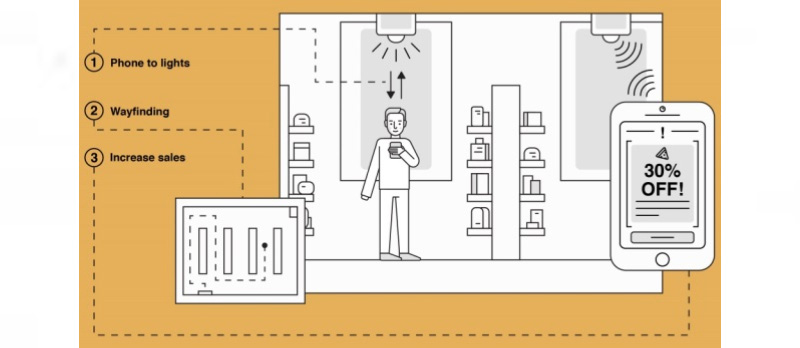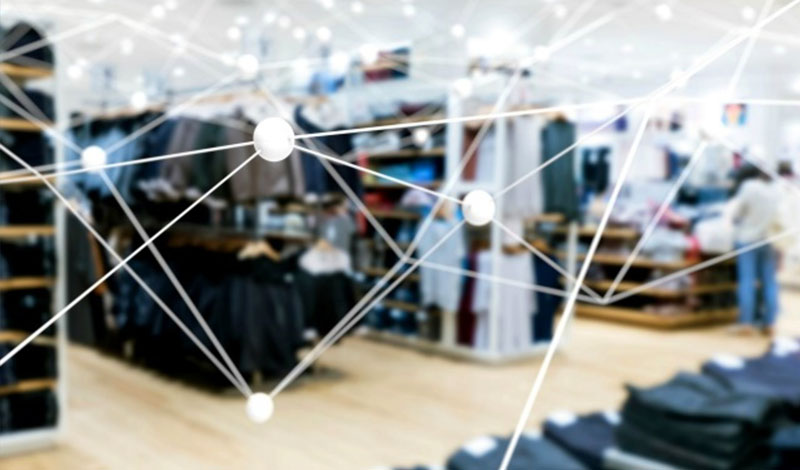The Internet of Things (IoT) is gaining momentum. Enabled devices that can communicate with each other and share information are driving the market. In addition to lower energy consumption, IoT is delivering additional benefits, such as improved customer service and more flexible lighting systems. Visual light communication (VLC) is a growing part of this trend.
Guiding lights
For retail and other types of facilities, VLC integrates light and data to provide indoor positioning and location tracking from a digital ceiling. VLC is a light-based alternative to WiFi technology. As such, it’s commonly known as Li-Fi.
With VLC technology, every LED fixture pulses its light at a high frequency not discernible to the human eye, but which can be picked up by a mobile device camera with the appropriately installed software. This technology is much more accurate and accessible than GPS positioning, especially indoors.

Unlike low-energy Bluetooth beacons, VLC requires users to hold their mobile devices so they’re exposed to the ceiling lighting. However, most retail VLC end-users install a hybrid product augmented by wireless Bluetooth beacons.
The VLC mobile device application can guide customers to the products they want to buy and will also push applicable coupons or sales information to phones to generate more revenue. VLC technology can track retail customers holding their mobile device by location within a store. Customer tracking data can be mined to optimize product placement.
Other applications for VLC technology include high-speed wireless internet access, patient and asset tracking in healthcare facilities, social distancing verification, vehicle-to-vehicle-communications, wayfinding in transportation depots and display guidance in museums.
A bright future?
The markets for VLC are still emerging, but a number of companies — such as Acuity Brands (Bytelight), Qualcomm and pureLIFI — are developing commercial products. Communication using light is considered much more cyber-secure compared to using WiFi.
Retailer Target has tested VLC technology in dozens of stores. Philips has installed VLC at the Dutch National Museum for Science and Medicine.
Despite these positive signs, challenges remain to widespread commercialization. These include integration of VLC with existing communications standards, achieving comparable upload speeds and reducing interference from other VLC devices.
Standardization of VLC technology would help to overcome these challenges. To that end, IEEE developed Standard 802.15.7 Short-Range Wireless Optical Communication Using Visible Light. This standard provides a benchmark for the development of new products and applications.
With increasing standardization and continued advances in solid-state lighting technology, the market for VLC applications may continue to develop and grow.
